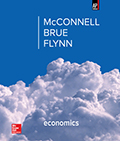1 A) short run B) very short run C) long run D) very long run 2 A) creation, pricing, and marketing B) invention, innovation, and diffusion C) manufacturing, venturing, and promotion D) start-ups, imitation, and creative destruction 3 A) process innovation B) product innovation C) creative destruction D) invention 4 A) trademark B) copyright C) patent D) brand 5 A) be patented to protect the investment of the developers B) enable firms to make competitors' products obsolete C) guarantee the monopoly position of innovative firms D) reduce research and development costs for firms 6 A) start-ups B) diffusion C) invention D) fast-second strategy 7 A) 2.9% B) 7.6% C) 10.6% D) 21.2% 8 A) rooted in the independent advancement of science B) best stimulated through government R&D spending C) a result of intense rivalry among individuals and firms D) a random outside force to which the economy adjusts 9 A) innovators work in teams, but entrepreneurs do not B) innovators manage start-ups, but entrepreneurs do not C) entrepreneurs bear personal financial risk, but innovators do not D) entrepreneurs invent new products and processes, but innovators do not 10 A) have access to more private resources for further innovation B) have access to less private resources for further innovation C) have access to more public support for further innovation D) experience no change in the availability of private or public resources for further innovation 11 Answer this Question based on the following table showing the expected rate of return, R&D spending, and interest-rate cost of funds for a hypothetical firm. <a onClick="window.open('/olcweb/cgi/pluginpop.cgi?it=jpg::::/sites/dl/free/0021403236/1031777/Ch013W_11_12_13.jpg','popWin', 'width=NaN,height=NaN,resizable,scrollbars');" href="#"><img valign="absmiddle" height="16" width="16" border="0" src="/olcweb/styles/shared/linkicons/image.gif"> (28.0K)</a> A) vertical line at 9% B) horizontal line at 9% C) upsloping line over the 15 to 7% range D) downsloping line over the 15 to 7% range 12 Answer this Question based on the following table showing the expected rate of return, R&D spending, and interest-rate cost of funds for a hypothetical firm.<a onClick="window.open('/olcweb/cgi/pluginpop.cgi?it=jpg::::/sites/dl/free/0021403236/1031777/Ch013W_11_12_13.jpg','popWin', 'width=NaN,height=NaN,resizable,scrollbars');" href="#"><img valign="absmiddle" height="16" width="16" border="0" src="/olcweb/styles/shared/linkicons/image.gif"> (28.0K)</a> A) $40 million B) $60 million C) $80 million D) $100 million 13 Answer this Question based on the following table showing the expected rate of return, R&D spending, and interest-rate cost of funds for a hypothetical firm. <a onClick="window.open('/olcweb/cgi/pluginpop.cgi?it=jpg::::/sites/dl/free/0021403236/1031777/Ch013W_11_12_13.jpg','popWin', 'width=NaN,height=NaN,resizable,scrollbars');" href="#"><img valign="absmiddle" height="16" width="16" border="0" src="/olcweb/styles/shared/linkicons/image.gif"> (28.0K)</a> A) $40 million B) $60 million C) $80 million D) $100 million 14 A) decreasing the firm's average costs B) increasing the firm's total revenue C) decreasing marginal utility per dollar spent D) increasing the success of R&D spending 15 A) it has a lower marginal utility per dollar spent than another product B) there is a substantial budget for promotion and marketing C) it can be sold at a lower price than that for a competing product D) it increases the total utility they obtain from their limited income 16 A) downward shift in the total-product curve and an upward shift in the average-cost curve B) upward shift in the total-product curve and a downward shift in the average-cost curve C) upward shift in both the total-product and average-cost curves D) downward shift in both the total-product and average-cost curves 17 A) developing two products to compete with rivals B) cutting the development time for the introduction of a new product C) moving quickly to buy the second largest firm in the industry to gain larger market share D) letting smaller firms initiate new products and then quickly imitating the success 18 A) venture capital B) trademarks C) trade secrets D) mergers 19 A) use of the fast-second strategy B) increase in retained earnings C) lower interest-rate costs of funds D) potential for profitable buyouts 20 A) a monopolistically competitive firm B) a purely competitive firm C) an oligopolistic firm D) a pure monopoly 21 A) a monopolistically competitive firm B) a purely competitive firm C) an oligopolistic firm D) a pure monopoly 22 A) low-concentration industries only B) high-concentration industries only C) low- and high-concentration industries D) low- to middle-concentration industries 23 A) are many purely competitive firms B) are monopolists closely regulated by government C) is a mix of large oligopolistic firms with several small and highly innovative firms D) is a mix of monopolistically competitive firms and a few large monopolists in industries with high capital costs 24 A) decreases allocative efficiency B) increases allocative efficiency C) decreases productive efficiency D) increases productive efficiency 25 A) Innovation would lead to monopoly power and thus destroy the economy. B) The creation of new products and production methods would destroy the market for existing products. C) Invention would create new products, but diffusion would destroy many potentially good ideas. D) Firms are being creative with learning by doing, but this spirit is destroyed by the inability of firms to finance R&D expenditures.





